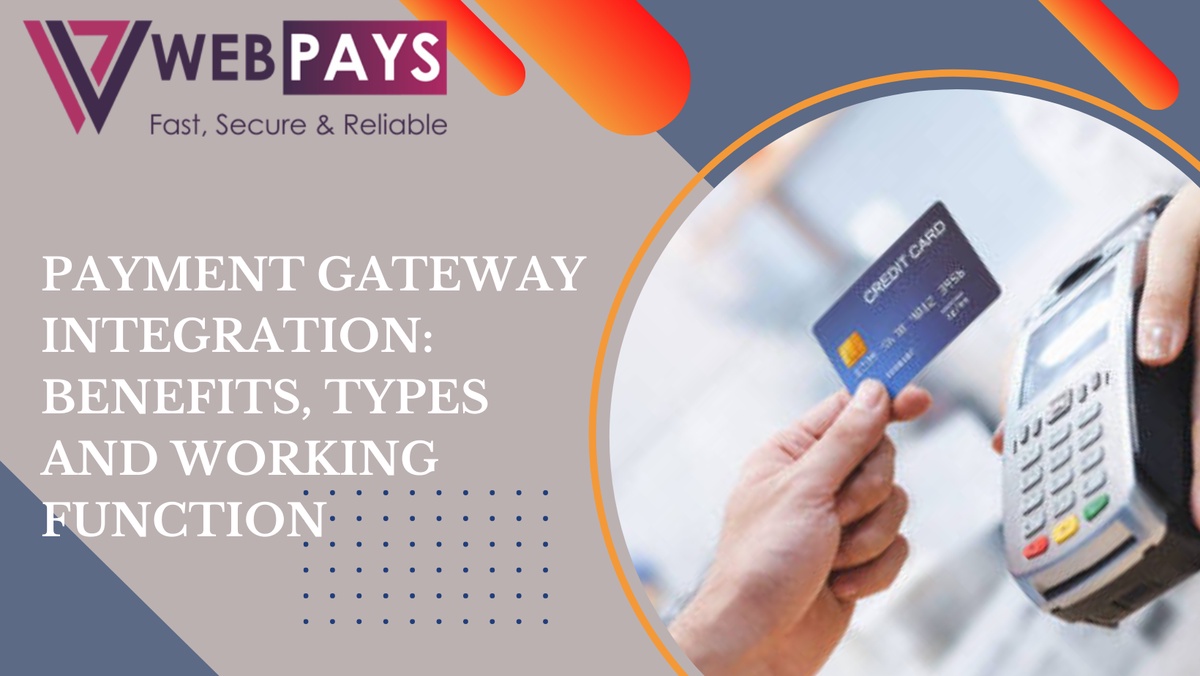In today's digital economy, the ability to accept electronic payments is essential for businesses of all sizes. Payment gateway integration serves as the backbone of online transactions, providing a seamless and secure way for businesses to process payments from customers worldwide.
In this comprehensive blog, we will explore the myriad benefits, diverse types, and workings of a payment gateway system. From enhancing customer convenience to expanding market reach, payment gateway offers businesses a multitude of advantages. Read on to the last of this blog to uncover the more ins and outs about payment gateway.
What Is A Payment Gateway Integration?
A payment gateway is a technology that facilitates the secure transmission of payment information between a merchant's website or point-of-sale system and the payment processor. Essentially, it acts as a bridge that authorizes and processes electronic transactions, ensuring that sensitive payment data, such as credit card details, remains encrypted and secure throughout the transaction process. Payment gateway plays a crucial role in enabling businesses to accept various forms of payment, such as credit cards, debit cards, digital wallets, and alternative payment methods, allowing them to conduct online transactions efficiently and securely.
Who Needs A Payment Gateway?
Anyone who operates a business and wishes to accept electronic payments from customers needs a payment gateway. This includes
- E-commerce websites: Online retailers selling products or services over the Internet require a payment gateway to process payments securely and efficiently.
- Brick-and-mortar stores: Physical retail stores that want to offer customers the option to pay with credit or debit cards at the point of sale can benefit from it.
- Service providers: Businesses offering services such as consulting, freelancing, or subscriptions may need a payment gateway to accept payments online or through invoicing.
- Mobile apps: Developers of mobile applications that offer in-app purchases or subscription-based services often integrate a payment gateway to facilitate transactions within the app.
- Non-profit organizations: Charities and non-profit organizations seeking to accept donations online may use a payment gateway to process contributions securely.
Benefits of Payment Gateways For Businesses:
A High risk payment gateway to any business can experience numerous benefits that contribute to increased sales, improved customer experience, enhanced security, and overall operational efficiency.
Simplified Checkout: Focus on your business, not payment complexities. Gateways handle the technical aspects and keep your checkout process smooth and user-friendly.
Enhanced Security: Protect your business and customers with advanced fraud detection and encryption measures built into the gateway. Minimize chargebacks and financial risks.
Expanded Payment Options: Cater to a wider customer base by offering popular payment methods like digital wallets, bank transfers, and even crypto, in addition to traditional cards.
Increased Conversion Rates: Reduce cart abandonment and boost sales by providing a smooth and secure checkout experience.
Real-time Processing: Get instant confirmation of payments, allowing for faster order fulfilment and improved customer satisfaction.
Reduced Operational Costs: Eliminate the need for manual payment processing and associated costs. Streamline operations and improve efficiency.
How Does A Payment Gateway Work?
A payment gateway works by securely transmitting payment information between a merchant's website or point-of-sale system and the payment processor. Here's how it typically works:
- Customer Checkout: The customer initiates payment after selecting items to purchase on the merchant's website & proceeds to the checkout page to complete the payment process.
- Payment details entered: The customer enters their payment information, such as credit card details or digital wallet credentials, into the payment form provided by the merchant.
- Encryption and transmission: The payment gateway encrypts the customer's payment information to ensure its security. It then transmits this encrypted data to the payment processor for authorization.
- Authorization request: The payment processor receives the encrypted payment data from the payment gateway and forwards it to the customer's bank or card issuer for authorization.
- Authorization response: The customer's bank or card issuer reviews the authorization request and verifies whether the transaction can be approved based on factors such as available funds and fraud checks.
- Authorization approval or decline: The customer's bank or card issuer sends an authorization response back to the payment processor via the payment gateway. If the transaction is approved, the payment gateway relays this information to the merchant's website, allowing the customer to complete the purchase. If the transaction is declined, the customer is notified, and the transaction is not processed.
- Transaction completion: Once the payment is authorized and approved, the transaction is completed, and the funds are transferred from the customer's account to the merchant's account. The payment gateway sends a confirmation message to both the customer and the merchant, indicating that the transaction was successful.
Payment Gateway Vs Payment Processor: What’s Difference?
The main difference between a payment gateway and a payment processor lies in their roles and functions within the payment process:
1. Payment Gateway:
- A payment gateway is a technology that securely transmits payment information between a merchant's website or point-of-sale system and the payment processor.
- It encrypts and sends payment data to the payment processor for authorization and facilitates communication between the merchant, customer, and payment processor.
- Essentially, a payment gateway acts as a bridge between the merchant's website and the payment processor, ensuring that transactions are conducted securely.
2. Payment Processor:
- A payment processor is a service provider who manages or handle the processing of payment transactions carefully.
- It receives payment authorization requests from the payment gateway, verifies the transaction details, and communicates with the customer's bank or card issuer to approve or decline the transaction.
- Payment processors also manage the transfer of funds between the customer's account and the merchant's account, ensuring that payments are settled accurately and securely.
While a payment gateway facilitates the secure transmission of payment information, a payment processor manages the processing and settlement of payment transactions. Both components work together to enable businesses to accept payments from customers and ensure that transactions are completed smoothly and securely.
Conclusion:
Payment gateway is vital for businesses in today's digital era, offering numerous benefits like simplified checkout, enhanced security, and expanded payment options. By understanding how payment gateways work and their collaboration with payment processors, businesses can streamline transactions and improve customer experiences. Embracing payment gateway integration enables businesses to thrive in the online marketplace, driving sales and ensuring success in the ever-evolving world of electronic payments.


No comments yet